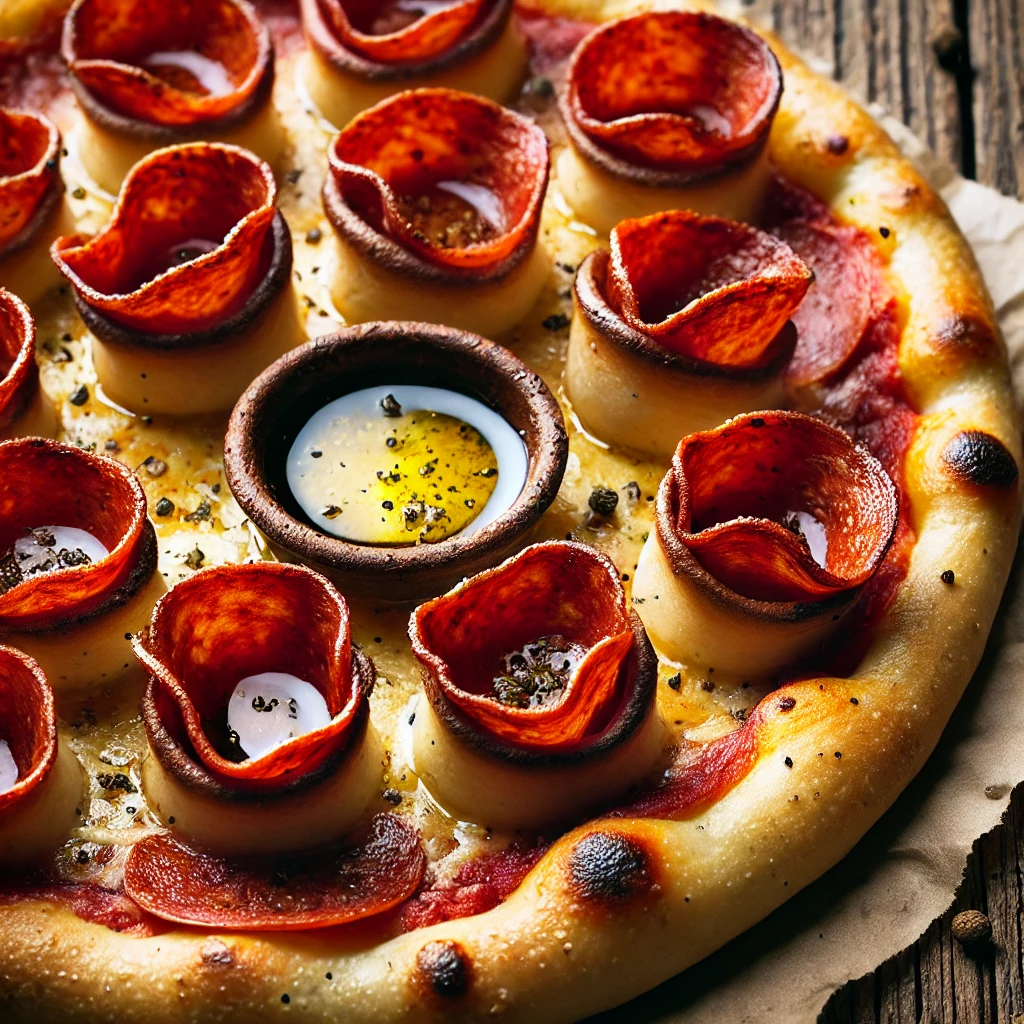Introduction to Old World Pepperoni
Old World pepperoni is a unique and flavorful version of the pepperoni most people are familiar with. It’s characterized by its bold taste, natural casing, and distinctive “cupping” effect, where the edges curl up when cooked. Unlike its more common counterpart, which is often flat and uniform in texture, Old Worldpepperoni has a rich history, deeper flavor, and has recently been making a resurgence in artisanal pizzerias. But what makes it so special?
The Origin and History of Pepperoni
A Brief History of Pepperoni in America
Pepperoni as we know it was developed by Italian immigrants in the United States. The pepperoni commonly used in the U.S. is not a traditional Italian product but was born out of the melding of Italian curing techniques and American ingredients. In the early 20th century, pepperoni began to gain traction as a pizza topping, eventually becoming a staple.
Origins of Old World Pepperoni
Old Worldpepperoni, on the other hand, hearkens back to traditional Italian sausage-making techniques. It uses natural casings, giving it that signature curl when baked. This style of pepperoni is closer to the original Italian cured meats, focusing more on robust, spicy flavors and artisanal methods.
Differences Between Old World and Regular Pepperoni
Casing
One of the key differences between Old World and regular pepperoni lies in the casing. Old Worldpepperoni is made with natural casings, which allows the pepperoni to curl up and form a crispy edge when baked. Regular pepperoni typically uses synthetic casings, resulting in flat slices.
Seasoning
Old Worldpepperoni tends to be spicier and more flavorful, using a variety of robust spices like paprika, chili flakes, and fennel. In contrast, modern pepperoni often has a milder flavor.
Cooking Methods
Old Worldpepperoni is often cooked in a way that promotes “cupping” and slight charring, adding texture and flavor, while regular pepperoni remains flat and doesn’t develop the same level of crispiness.
The Art of Cupping and Charring
One of the defining characteristics of Old Worldpepperoni is the way it curls up during cooking. This phenomenon, known as “cupping,” occurs because of the natural casing and the way the fat renders out of the meat. The edges of the pepperoni become crispy, and the cup holds the oil, creating a burst of flavor in each bite.
The slight charring on the edges adds a layer of smoky complexity to the flavor profile, making each slice a delightful combination of crisp, spicy, and savory.
Flavor Profile of Old World Pepperoni
Old Worldpepperoni boasts a more intense flavor than its modern counterpart. The spices, including black pepper, garlic, and paprika, combine to create a rich, smoky, and slightly spicy taste. The natural casing also adds a unique texture, offering a satisfying snap with each bite.
Production Process of Old World Pepperoni
Old Worldpepperoni is made using traditional methods that include fermentation and drying. This process gives the pepperoni its distinct tanginess and depth of flavor. The use of natural casings, along with time-honored curing methods, sets it apart from the mass-produced pepperoni found in most supermarkets.
How to Spot Old World Pepperoni on Pizza
Visually, Old Worldpepperoni is easy to recognize. When baked, the slices curl up into little cups, often with crispy, charred edges. The centers of these cups hold small pools of oil, which enhance the flavor and texture. In contrast, regular pepperoni stays flat and uniform.
Old World Pepperoni in Pizza Making
This style of pepperoni is particularly well-suited for artisan pizzas with thin, crispy crusts. Its bold flavor pairs perfectly with tangy tomato sauces and rich mozzarella. Some pizza makers also use Old Worldpepperoni alongside other premium ingredients, such as fresh basil or burrata, to create a gourmet experience.
Why is Old World Pepperoni More Expensive?
The production of Old Worldpepperoni is more time-consuming and costly due to the use of natural ingredients and artisanal methods. The fermentation process, high-quality meats, and spices all contribute to a higher price point compared to regular pepperoni.
The Rising Popularity of Old World Pepperoni
In recent years, the demand for Old Worldpepperoni has grown significantly, especially among food enthusiasts and pizza lovers. Many pizzerias now offer it as a premium topping, and social media has played a significant role in promoting its appeal.
Informative Chart: Comparison Between Old World and Regular Pepperoni
| Feature | Old World Pepperoni | Regular Pepperoni |
|---|---|---|
| Casing | Natural casing | Synthetic casing |
| Flavor | Bold, spicy, smoky | Mild, less intense |
| Texture | Crispy, curled edges | Flat, uniform texture |
| Cooking Style | Cupping, charring | Stays flat |
| Ingredients | Traditional spices, premium meats | Standard spices, processed meats |
| Cost | More expensive | Less expensive |
| Popularity | Rising among enthusiasts | Common on most pizzas |
Conclusion: The Appeal of Old World Pepperoni
Old World pepperoni has brought a new dimension to the pizza experience. Its intense flavor, unique texture, and artisanal production methods make it a standout choice for those looking to elevate their pizza game. While it may come at a higher cost, the rich taste and nostalgic appeal of Old Worldpepperoni are well worth it.
FAQs
- What makes Old Worldpepperoni curl?
- The natural casing and the rendering of fat cause Old World pepperoni to curl into cups when cooked.
- Is Old World pepperoni spicier than regular pepperoni?
- Yes, Old Worldpepperoni typically has a spicier and bolder flavor due to the use of traditional spices like paprika and black pepper.
- Can I use Old Worldpepperoni in dishes other than pizza?
- Absolutely! It works well in sandwiches, charcuterie boards, and even pasta dishes.
- Why is Old Worldpepperoni more expensive?
- The higher cost is due to the use of premium ingredients, natural casings, and traditional production methods.
- Where can I buy Old World pepperoni?
- You can find it in specialty grocery stores or order it online from artisanal meat producers.










